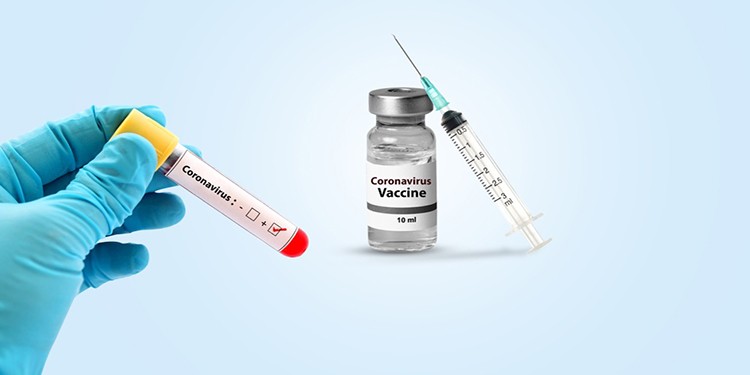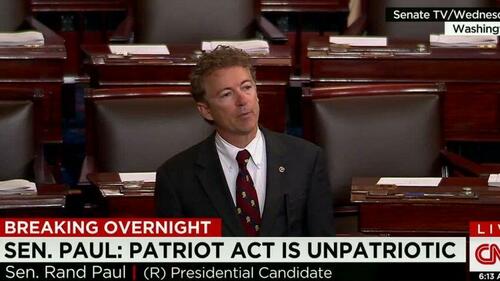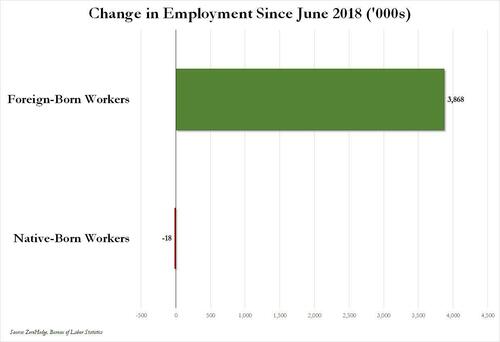3 Healthcare Stocks Fighting the Coronavirus
3 Healthcare Stocks Fighting the Coronavirus


It’s a new week, and market watchers are bracing themselves for whatever comes their way. Ahead of the opening bell on Monday U.S. stock futures are up, some welcome news after stocks rounded out the week in the red. The uptick comes as Italy, Spain and New York report death rates are slowing, giving investors a sliver of hope that some headway is being made in the battle against COVID-19.
For those feeling a sense of déjà vu, you’re not alone. Oanda’s senior market analyst for Asia Pacific, Jeffrey Halley, thinks the most recent bump might only be temporary, stating that the disappointing March jobs report from last week implies COVID-19 is wreaking “almost unimaginable havoc on the world's economy.”
Having said that, while the broader market seesaws between the red and the green, Wall Street pros believe a few tickers are positioned for substantial gains, pointing specifically to healthcare companies taking on the deadly virus.
Using TipRanks’ database, we pinpointed three healthcare stocks fighting COVID-19 that are primed for significant growth. In addition, it revealed what the analyst community has to say about each of the Buy-rated names. Here’s the lowdown.
Kiniksa Pharmaceuticals Ltd. (KNSA)
Through its innovative technology designed to modulate immunological signaling pathways, Kiniksa wants to improve the lives of patients battling diseases with significant unmet medical need. In stark contrast to the broader market, 2020 has been good to this name, with it up 62% year-to-date. Given the company's update on its COVID-19 treatment, the analysts believe there’s more good news to come.
KNSA recently reported that its anti-GM-CSFRα antibody, mavrilimumab, had been used to treat six severe COVID-19 pneumonia and hyperinflammation patients in a study conducted by Professor Lorenzo Dagna at the San Raffaele University in Italy. To say that the results were promising is an understatement. All of the patients saw their fevers resolved and an improvement in oxygenation within 1-3 days. On top of this, none of the patients needed mechanical ventilation and half were able to be discharged within 5 days.
Weighing in for Wedbush, analyst David Nierengarten points out that COVID-19 causes similar symptoms to other toxicities addressed by mavrilimumab. Cell therapies are sometimes impacted by serious adverse events like cytokine release syndrome (CRS) and neurologic toxicity that can prolong hospital stays, increase treatment costs and even lead to death, but KNSA’s antibody has been shown to reduce the occurrence of these events. This is encouraging as evidence suggests COVID-19 patients have higher levels of pro-inflammatory cytokines that can cause CRS.
Commenting on mavrilimumab, Nierengarten said, “We are intrigued by these early developments and look forward to a possible Phase 2/3 clinical study in the future...While we do not currently value mavrilimumab in COVID-19, we do see these results as a broad validation of the anti-GM-CSFRα antibody's power in reducing severe inflammation.”
It should come as no surprise, then, that Nierengarten maintained an Outperform rating as well as a $30 price target. Should this target be met, a twelve-month gain of 68% could be in the cards. (To watch Nierengarten’s track record, click here)
All in all, other analysts are on the same page. With 100% Street support, or 3 Buy recommendations to be exact, the message is clear: KNSA is a Strong Buy. At $30, the average price target matches Nierengarten’s forecast. (See Kiniksa stock analysis on TipRanks)
CytoDyn, Inc. (CYDY)
CytoDyn is primarily focused on developing Leronlimab (PRO 140), its once a week CCR5 antagonist-based injection to target the CCR5 receptor, which is seen in many diseases like HIV, GVHD, NASH, stroke recovery, multiple sclerosis, Parkinson's disease and metastatic cancer. Partly due to the candidate’s possible use in treating COVID-19, shares have soared 179% year-to-date.
The company has recently announced that eight out of ten patients with severe cases of COVID-19 demonstrated a significant improvement in immunologic biomarkers, especially cytokines (including the key inflammation driver IL-6), and some normalization of the CD4/CD8 ratio. The result implies that the therapy was able to restore immune function and mitigate the cytokine storm, which are associated with patient improvement.
Explaining the implications, H.C. Wainwright analyst Yi Chen noted, This conclusion was reaffirmed after noted, “In our view, if leronlimab can consistently demonstrate in the Phase 2b/3 trial that it can help severely ill patients recover from pulmonary inflammation that drives mortality and the need for ventilators and prevent acute respiratory distress syndrome (ARDS), the FDA may grant accelerated approval for this potentially lifesaving drug due to the escalating cases and deaths due to COVID-19 in the U.S., particularly in New York State. In the wake of this update, we have added potential sales of leronlimab as COVID-19 therapy to our valuation, with a 35% probability of approval.”
If that wasn’t promising enough, CYDY plans to enroll patients in both the mild-to-moderately ill and severely ill protocols quickly under the same IND that was provided with a “safe to proceed” letter from the FDA.
Given everything CYDY has going for it, it makes sense that Chen decided to stay with the bulls. Along with a Buy rating, the five-star analyst bumped up the price target from $1.50 to $3. This suggests that shares could move 8% higher in the next year. (To watch Chen’s track record, click here)
Looking at the consensus breakdown, it has been quiet when it comes to other analyst activity. Chen’s rating is the only recent review, and thus the consensus rating is a Moderate Buy. Unsurprisingly, investor sentiment is positive, with individual portfolios in the TipRanks database showing a net increase in CYDY. (See CytoDyn stock analysis on TipRanks)
BioNTech SE (BNTX)
The last healthcare name on our list wants to provide cancer patients with the ability to individualize treatment based on the specific genetic features of their tumors. Recently, BioNTech has garnered positive attention thanks to its efforts to develop a COVID-19 vaccine, as demonstrated by its 56% year-to-date rise.
Writing for Canaccord, analyst Arlinda Lee has been impressed by BNTX’s collaboration with Pfizer and Fosun in China to develop a vaccine candidate against COVID-19. Kicking off its research program in January, the company designed its mRNA vaccine, BNT162, to induce immunity and prevention of the virus. This candidate is the first to be born out of Project Lightspeed, an accelerated development program featuring BNTX's mRNA infectious disease platform and GMP manufacturing infrastructure, which can potentially prevent and treat COVID-19.
This prompted Lee to comment, “In our view, the speed to instigate the COVID program and bring a candidate to clinic underscores BNTX’s scientific expertise and the rapidity and efficiency of its platform.”
That being said, Lee believes BNTX’s growth story goes behind this program. Its most advanced candidate, BNT111, is a vaccine designed with antigens commonly expressed in melanomas. With complete Phase 1 data slated for release in the second quarter and a pivotal trial set to start in 2020, this candidate could drive significant upside.
BNTX is also working with Genentech to develop a personalized cancer vaccine RO198457 (BNT122), with ongoing trials in melanoma and solid tumors. Data readouts from these trials could serve as key catalysts for the company as well.
Bearing this in mind, Lee left a bullish call on the stock as well as gave the price target a boost, increasing the figure from $22 to $60. At this new target, the upside potential amounts to 14%. (To watch Lee’s track record, click here)
Turning now to the rest of the Street, opinions are split evenly down the middle. 3 Buys and 3 Holds assigned in the last three months add up to a Moderate Buy analyst consensus. The $38.40 average price target implies downside potential of 27%, but this could change should other analysts update their models to account for the recent share price appreciation. (See BioNTech stock analysis on TipRanks)

To find good ideas for stocks trading at attractive valuations, visit TipRanks’ Best Stocks to Buy, a newly launched tool that unites all of TipRanks’ equity insights.
The post 3 Healthcare Stocks Fighting the Coronavirus appeared first on TipRanks Financial Blog.
Government
Survey Shows Declining Concerns Among Americans About COVID-19
Survey Shows Declining Concerns Among Americans About COVID-19
A new survey reveals that only 20% of Americans view covid-19 as "a major threat"…

A new survey reveals that only 20% of Americans view covid-19 as "a major threat" to the health of the US population - a sharp decline from a high of 67% in July 2020.
What's more, the Pew Research Center survey conducted from Feb. 7 to Feb. 11 showed that just 10% of Americans are concerned that they will catch the disease and require hospitalization.
"This data represents a low ebb of public concern about the virus that reached its height in the summer and fall of 2020, when as many as two-thirds of Americans viewed COVID-19 as a major threat to public health," reads the report, which was published March 7.
According to the survey, half of the participants understand the significance of researchers and healthcare providers in understanding and treating long COVID - however 27% of participants consider this issue less important, while 22% of Americans are unaware of long COVID.
What's more, while Democrats were far more worried than Republicans in the past, that gap has narrowed significantly.
"In the pandemic’s first year, Democrats were routinely about 40 points more likely than Republicans to view the coronavirus as a major threat to the health of the U.S. population. This gap has waned as overall levels of concern have fallen," reads the report.
More via the Epoch Times;
The survey found that three in ten Democrats under 50 have received an updated COVID-19 vaccine, compared with 66 percent of Democrats ages 65 and older.
Moreover, 66 percent of Democrats ages 65 and older have received the updated COVID-19 vaccine, while only 24 percent of Republicans ages 65 and older have done so.
“This 42-point partisan gap is much wider now than at other points since the start of the outbreak. For instance, in August 2021, 93 percent of older Democrats and 78 percent of older Republicans said they had received all the shots needed to be fully vaccinated (a 15-point gap),” it noted.
COVID-19 No Longer an Emergency
The U.S. Centers for Disease Control and Prevention (CDC) recently issued its updated recommendations for the virus, which no longer require people to stay home for five days after testing positive for COVID-19.
The updated guidance recommends that people who contracted a respiratory virus stay home, and they can resume normal activities when their symptoms improve overall and their fever subsides for 24 hours without medication.
“We still must use the commonsense solutions we know work to protect ourselves and others from serious illness from respiratory viruses, this includes vaccination, treatment, and staying home when we get sick,” CDC director Dr. Mandy Cohen said in a statement.
The CDC said that while the virus remains a threat, it is now less likely to cause severe illness because of widespread immunity and improved tools to prevent and treat the disease.
“Importantly, states and countries that have already adjusted recommended isolation times have not seen increased hospitalizations or deaths related to COVID-19,” it stated.
The federal government suspended its free at-home COVID-19 test program on March 8, according to a website set up by the government, following a decrease in COVID-19-related hospitalizations.
According to the CDC, hospitalization rates for COVID-19 and influenza diseases remain “elevated” but are decreasing in some parts of the United States.
International
Rand Paul Teases Senate GOP Leader Run – Musk Says “I Would Support”
Rand Paul Teases Senate GOP Leader Run – Musk Says "I Would Support"
Republican Kentucky Senator Rand Paul on Friday hinted that he may jump…

Republican Kentucky Senator Rand Paul on Friday hinted that he may jump into the race to become the next Senate GOP leader, and Elon Musk was quick to support the idea. Republicans must find a successor for periodically malfunctioning Mitch McConnell, who recently announced he'll step down in November, though intending to keep his Senate seat until his term ends in January 2027, when he'd be within weeks of turning 86.
So far, the announced field consists of two quintessential establishment types: John Cornyn of Texas and John Thune of South Dakota. While John Barrasso's name had been thrown around as one of "The Three Johns" considered top contenders, the Wyoming senator on Tuesday said he'll instead seek the number two slot as party whip.
Paul used X to tease his potential bid for the position which -- if the GOP takes back the upper chamber in November -- could graduate from Minority Leader to Majority Leader. He started by telling his 5.1 million followers he'd had lots of people asking him about his interest in running...
Thousands of people have been asking if I'd run for Senate leadership...
— Rand Paul (@RandPaul) March 8, 2024
...then followed up with a poll in which he predictably annihilated Cornyn and Thune, taking a 96% share as of Friday night, with the other two below 2% each.
????????️VOTE NOW ????️ ???? Who would you like to be the next Senate leader?
— Rand Paul (@RandPaul) March 8, 2024
Elon Musk was quick to back the idea of Paul as GOP leader, while daring Cornyn and Thune to follow Paul's lead by throwing their names out for consideration by the Twitter-verse X-verse.
I would support Rand Paul and suspect that other candidates will not actually run polls out of concern for the results, but let’s see if they will!
— Elon Musk (@elonmusk) March 8, 2024
Paul has been a stalwart opponent of security-state mass surveillance, foreign interventionism -- to include shoveling billions of dollars into the proxy war in Ukraine -- and out-of-control spending in general. He demonstrated the latter passion on the Senate floor this week as he ridiculed the latest kick-the-can spending package:
This bill is an insult to the American people. The earmarks are all the wasteful spending that you could ever hope to see, and it should be defeated. Read more: https://t.co/Jt8K5iucA4 pic.twitter.com/I5okd4QgDg
— Senator Rand Paul (@SenRandPaul) March 8, 2024
In February, Paul used Senate rules to force his colleagues into a grueling Super Bowl weekend of votes, as he worked to derail a $95 billion foreign aid bill. "I think we should stay here as long as it takes,” said Paul. “If it takes a week or a month, I’ll force them to stay here to discuss why they think the border of Ukraine is more important than the US border.”
Don't expect a Majority Leader Paul to ditch the filibuster -- he's been a hardy user of the legislative delay tactic. In 2013, he spoke for 13 hours to fight the nomination of John Brennan as CIA director. In 2015, he orated for 10-and-a-half-hours to oppose extension of the Patriot Act.
Among the general public, Paul is probably best known as Capitol Hill's chief tormentor of Dr. Anthony Fauci, who was director of the National Institute of Allergy and Infectious Disease during the Covid-19 pandemic. Paul says the evidence indicates the virus emerged from China's Wuhan Institute of Virology. He's accused Fauci and other members of the US government public health apparatus of evading questions about their funding of the Chinese lab's "gain of function" research, which takes natural viruses and morphs them into something more dangerous. Paul has pointedly said that Fauci committed perjury in congressional hearings and that he belongs in jail "without question."
Musk is neither the only nor the first noteworthy figure to back Paul for party leader. Just hours after McConnell announced his upcoming step-down from leadership, independent 2024 presidential candidate Robert F. Kennedy, Jr voiced his support:
Mitch McConnell, who has served in the Senate for almost 40 years, announced he'll step down this November.
— Robert F. Kennedy Jr (@RobertKennedyJr) February 28, 2024
Part of public service is about knowing when to usher in a new generation. It’s time to promote leaders in Washington, DC who won’t kowtow to the military contractors or…
In a testament to the extent to which the establishment recoils at the libertarian-minded Paul, mainstream media outlets -- which have been quick to report on other developments in the majority leader race -- pretended not to notice that Paul had signaled his interest in the job. More than 24 hours after Paul's test-the-waters tweet-fest began, not a single major outlet had brought it to the attention of their audience.
That may be his strongest endorsement yet.
Government
The Great Replacement Loophole: Illegal Immigrants Score 5-Year Work Benefit While “Waiting” For Deporation, Asylum
The Great Replacement Loophole: Illegal Immigrants Score 5-Year Work Benefit While "Waiting" For Deporation, Asylum
Over the past several…

Over the past several months we've pointed out that there has been zero job creation for native-born workers since the summer of 2018...
... and that since Joe Biden was sworn into office, most of the post-pandemic job gains the administration continuously brags about have gone foreign-born (read immigrants, mostly illegal ones) workers.
And while the left might find this data almost as verboten as FBI crime statistics - as it directly supports the so-called "great replacement theory" we're not supposed to discuss - it also coincides with record numbers of illegal crossings into the United States under Biden.
In short, the Biden administration opened the floodgates, 10 million illegal immigrants poured into the country, and most of the post-pandemic "jobs recovery" went to foreign-born workers, of which illegal immigrants represent the largest chunk.

'But Tyler, illegal immigrants can't possibly work in the United States whilst awaiting their asylum hearings,' one might hear from the peanut gallery. On the contrary: ever since Biden reversed a key aspect of Trump's labor policies, all illegal immigrants - even those awaiting deportation proceedings - have been given carte blanche to work while awaiting said proceedings for up to five years...
... something which even Elon Musk was shocked to learn.
Wow, learn something new every day https://t.co/8MDtEEZGam
— Elon Musk (@elonmusk) March 10, 2024
Which leads us to another question: recall that the primary concern for the Biden admin for much of 2022 and 2023 was soaring prices, i.e., relentless inflation in general, and rising wages in particular, which in turn prompted even Goldman to admit two years ago that the diabolical wage-price spiral had been unleashed in the US (diabolical, because nothing absent a major economic shock, read recession or depression, can short-circuit it once it is in place).
Well, there is one other thing that can break the wage-price spiral loop: a flood of ultra-cheap illegal immigrant workers. But don't take our word for it: here is Fed Chair Jerome Powell himself during his February 60 Minutes interview:
PELLEY: Why was immigration important?
POWELL: Because, you know, immigrants come in, and they tend to work at a rate that is at or above that for non-immigrants. Immigrants who come to the country tend to be in the workforce at a slightly higher level than native Americans do. But that's largely because of the age difference. They tend to skew younger.
PELLEY: Why is immigration so important to the economy?
POWELL: Well, first of all, immigration policy is not the Fed's job. The immigration policy of the United States is really important and really much under discussion right now, and that's none of our business. We don't set immigration policy. We don't comment on it.
I will say, over time, though, the U.S. economy has benefited from immigration. And, frankly, just in the last, year a big part of the story of the labor market coming back into better balance is immigration returning to levels that were more typical of the pre-pandemic era.
PELLEY: The country needed the workers.
POWELL: It did. And so, that's what's been happening.
Translation: Immigrants work hard, and Americans are lazy. But much more importantly, since illegal immigrants will work for any pay, and since Biden's Department of Homeland Security, via its Citizenship and Immigration Services Agency, has made it so illegal immigrants can work in the US perfectly legally for up to 5 years (if not more), one can argue that the flood of illegals through the southern border has been the primary reason why inflation - or rather mostly wage inflation, that all too critical component of the wage-price spiral - has moderated in in the past year, when the US labor market suddenly found itself flooded with millions of perfectly eligible workers, who just also happen to be illegal immigrants and thus have zero wage bargaining options.
None of this is to suggest that the relentless flood of immigrants into the US is not also driven by voting and census concerns - something Elon Musk has been pounding the table on in recent weeks, and has gone so far to call it "the biggest corruption of American democracy in the 21st century", but in retrospect, one can also argue that the only modest success the Biden admin has had in the past year - namely bringing inflation down from a torrid 9% annual rate to "only" 3% - has also been due to the millions of illegals he's imported into the country.
We would be remiss if we didn't also note that this so often carries catastrophic short-term consequences for the social fabric of the country (the Laken Riley fiasco being only the latest example), not to mention the far more dire long-term consequences for the future of the US - chief among them the trillions of dollars in debt the US will need to incur to pay for all those new illegal immigrants Democrat voters and low-paid workers. This is on top of the labor revolution that will kick in once AI leads to mass layoffs among high-paying, white-collar jobs, after which all those newly laid off native-born workers hoping to trade down to lower paying (if available) jobs will discover that hardened criminals from Honduras or Guatemala have already taken them, all thanks to Joe Biden.
-

 Uncategorized2 weeks ago
Uncategorized2 weeks agoAll Of The Elements Are In Place For An Economic Crisis Of Staggering Proportions
-

 Uncategorized1 month ago
Uncategorized1 month agoCathie Wood sells a major tech stock (again)
-

 Uncategorized3 weeks ago
Uncategorized3 weeks agoCalifornia Counties Could Be Forced To Pay $300 Million To Cover COVID-Era Program
-

 Uncategorized2 weeks ago
Uncategorized2 weeks agoApparel Retailer Express Moving Toward Bankruptcy
-

 Uncategorized4 weeks ago
Uncategorized4 weeks agoIndustrial Production Decreased 0.1% in January
-

 International3 days ago
International3 days agoWalmart launches clever answer to Target’s new membership program
-

 International3 days ago
International3 days agoEyePoint poaches medical chief from Apellis; Sandoz CFO, longtime BioNTech exec to retire
-

 Uncategorized3 weeks ago
Uncategorized3 weeks agoRFK Jr: The Wuhan Cover-Up & The Rise Of The Biowarfare-Industrial Complex


























